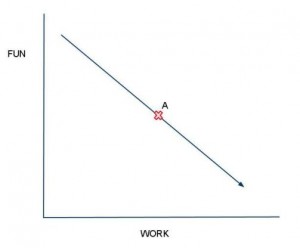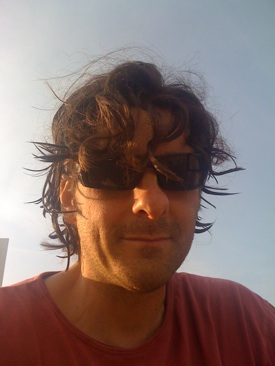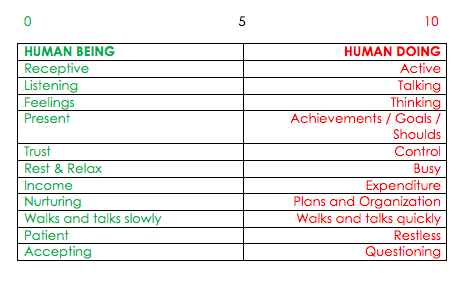This post is by Shaun McCarthy of Money Cactus.
Hands up if you are interested in creating wealth! Good, now keep your hands up if you are happy to work hard for it … Do you still have your hand up? If you do, we have a problem!
I’m not going to tell you that wealth creation is easy and you can do it sitting on your hands, but it’s not really that hard, either. The real problem is that wealth creation is a concept that is misunderstood by most people. It’s not just about making money, accumulating assets and increasing your net worth. These are just terms about numbers, helpful ones for a part of wealth creation, but who wants to be a number?
Wealth creation is better than making money, it’s about creating a wealthy life!
Real Wealth Creation
The best part about wealth creation is the creative part. There isn’t just one way to go about achieving a result—in fact, it is completely up to you. You can choose where you want to direct your energy and what you want to focus on, which means it is nothing like hard work! You can apply this to investing, your hobbies, and even your personal life.
The thing that most people struggle with however, is their working life. How do you enjoy that, particularly when you are doing it for somebody else?
Adam Baker at Man Vs Debt wrote a thought provoking post not long ago about Never Working Again. Since I’m a new father, it struck a chord for me. I suggest you go read it, but the general gist is that if you do something you love, then you will never feel like you have to work again.
There are lots of great examples of people that prove this point. Some of my favourites are Chris Guillebeau, who decided to find a way to pursue his desire for travel, Tim Ferriss, who has perfected ways to make work as efficient as possible and leave more time to do the things he loves, and even Darren Rowse, who discovered a love for the blogosphere and found ways to make an income from it while helping others.
You may think that you are not a super-entrepreneur like these people, but you don’t have to be. You just have to have the desire to make something happen for yourself.
Never Work Again
Most people travel through life resigned to the fact that they will have to work hard for the rest of their days. With luck they might start working somewhere they enjoy, they have few or no commitments and very little responsibility. s they become more experienced, their salary increases, they buy more stuff, and they take on more responsibility.
Their working life looks like this:
It’s usually at point A that people realize that things are not really going the way they were hoping. Smart people will look for a solution, while others will continue on their miserable way. As you are a smart person, you can find a solution. This does not necessarily mean quitting your job: what it means is finding a way to increase your working wealth. What we want to create is a working life that looks like this:
Work that gets better the more you do? Surely not! But it’s possible: people do it, and so can you. It is completely possible for you to do this simply by tweaking what you are doing right now. Here’s how:
- Find out what it is you want to do.
- Invest in yourself and make a conscious effort to succeed.
- Work towards your goal and enjoy the journey.
- Ensure you are looking after the other important areas of wealth in your life.
It really is that easy!
Even if you don’t want to, or can’t do this in your current job, you can use the skills you already have to help make this happen. Find an aspect of work or life that you most enjoy, or would like to do more of, and focus on it. This is entirely up to you: it could be turning a hobby into a career by teaching others what you know, or selling the things you make. Or like me, it could be finding a job that offers more than just a salary.
My desire was to travel. I wanted to see more of the world. Australia is a long way away from most other places and I couldn’t really afford extensive travel myself, so I found a job that required me to travel. Sure, I had to work while doing it, but I was being paid to go to new places and experience new things all over the world. As far as I was concerned, it was a perfect match!
Investing in yourself
Now that I have a young family, I have a new goal: finding more time to be at home. This has meant shifting my focus and working on ways that will enable me to spend less time at work and more time with my family. I really have to thank Tim Ferriss here, because his advice has been priceless. If you haven’t read the 4 Hour Work Week, then you really should.
This book has provided me with inspiration and ideas to pursue new avenues, and help design a life that I want to live. I still have more to do, but reading this book has been an investment in myself, which I think is one of the most important things you can do. For you, this might mean going to seminars or night classes, going back to school or just reading great books and online resources. The important part is to continue to learn. By developing your skills and knowledge, you will be able to create more opportunities to do the things you want.
You working life is just like the rest of your life: it’s a lot more fun if you have goals in mind. By making purposeful decisions and knowing where you want to go, you are going to enjoy the journey a lot more! Remember that successful people make sure they are looking after themselves and their loved ones as well. I don’t like getting too hung up on finances, but I do make sure that I make my money work for me so that, ultimately, I won’t have to work for it!
Once you get to point B in our ideal work graph, you should have created a situation where even fun work is no longer a necessity, but a choice you can make. At this point you can continue on your merry way, or find something new that you love to do, and go do that instead!
Shaun is not an accountant, financial planner or life coach, but he writes about wealth creation anyway! Shaun’s motto is “Make wealth, not money,” which fits quite nicely with where he wants to be in life. You can find out more by visiting his blog about Personal Wealth Creation.











Recent Comments